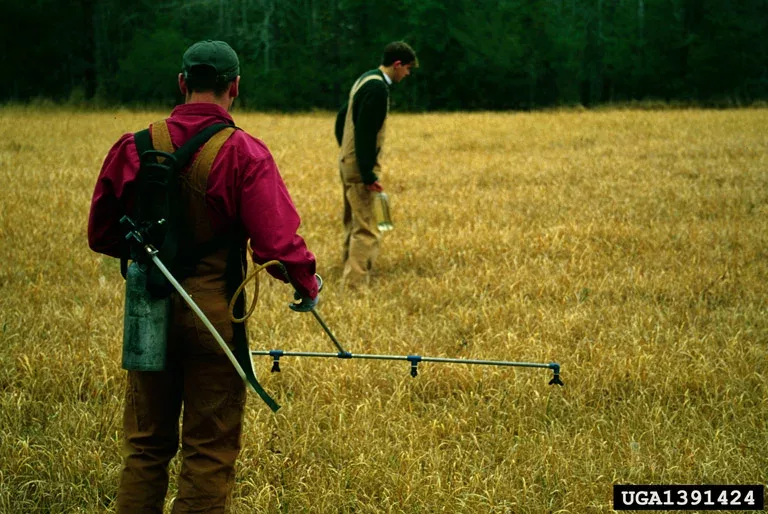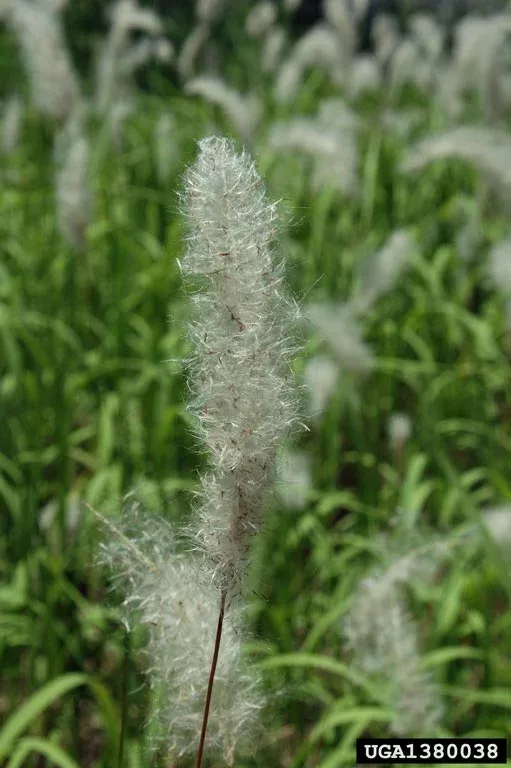
Cogongrass is a perennial, rhizomatous plant in the grass family (Poaceae) that grows approximately 2 to 4 or more feet in height. The leaves are about an inch wide, have a prominent white midrib, and end in a sharp point. Leaf margins are finely toothed and are embedded with silica crystals. The lower surface of the leaf blade is often hairy near the base; the upper is hairless. The white plume-like flowers are arranged in a silvery, cylindrical, branching structure, or panicle, about 3 to 11 inches long and 1½ inches wide. Cogon grass reproduces both vegetatively and from seed. In spring, a single plant can produce up to 3000 seeds per seed head that may be carried great distances by the wind. Vegetative spread of cogon grass is aided by its tough and massive rhizomes that may remain dormant for extended periods of time before sprouting. Rhizomes can grow from 1.5 to 3 meters per year.

Appearance
Imperata cylindrica is a perennial, colony-forming grass that can grow up to 6 ft. (1.8 m) tall.

Foliage
Leaves have an off-center, whitish midrib and finely serrated margins. Leaves are up to 6 ft. (1.8 m) long, 0.5-0.75 in. (1.3-1.9 cm) wide, stiff, and have a sharp, pointed apex. Rhizomes are whitish, branched, scaly, and sharp at the tips.
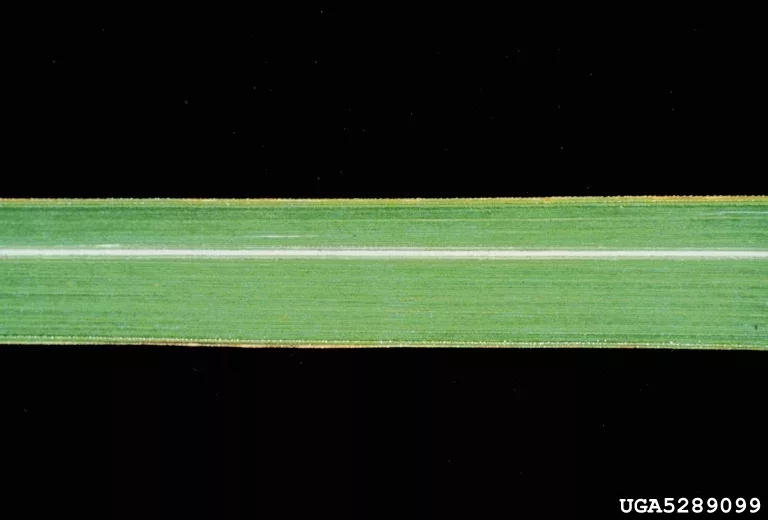
Flowers
Flower heads are 2-8 in. (5.1-20.3 cm) long, silvery-white and cylindrical.
Fruit
Imperata cylindrica is best identified in the spring by the large fuzzy panicle of flowers and seeds, giving the plant a cottony or silky look.

Imperata cylindrica is an extremely aggressive invader with the capability of invading a range of sites. It forms dense, usually circular infestations that exclude all other vegetation. It is native to Southeast Asia and was accidentally introduced into the southeast United States in packing material in the early 1900s. It was also intentionally introduced for erosion control and livestock forage.
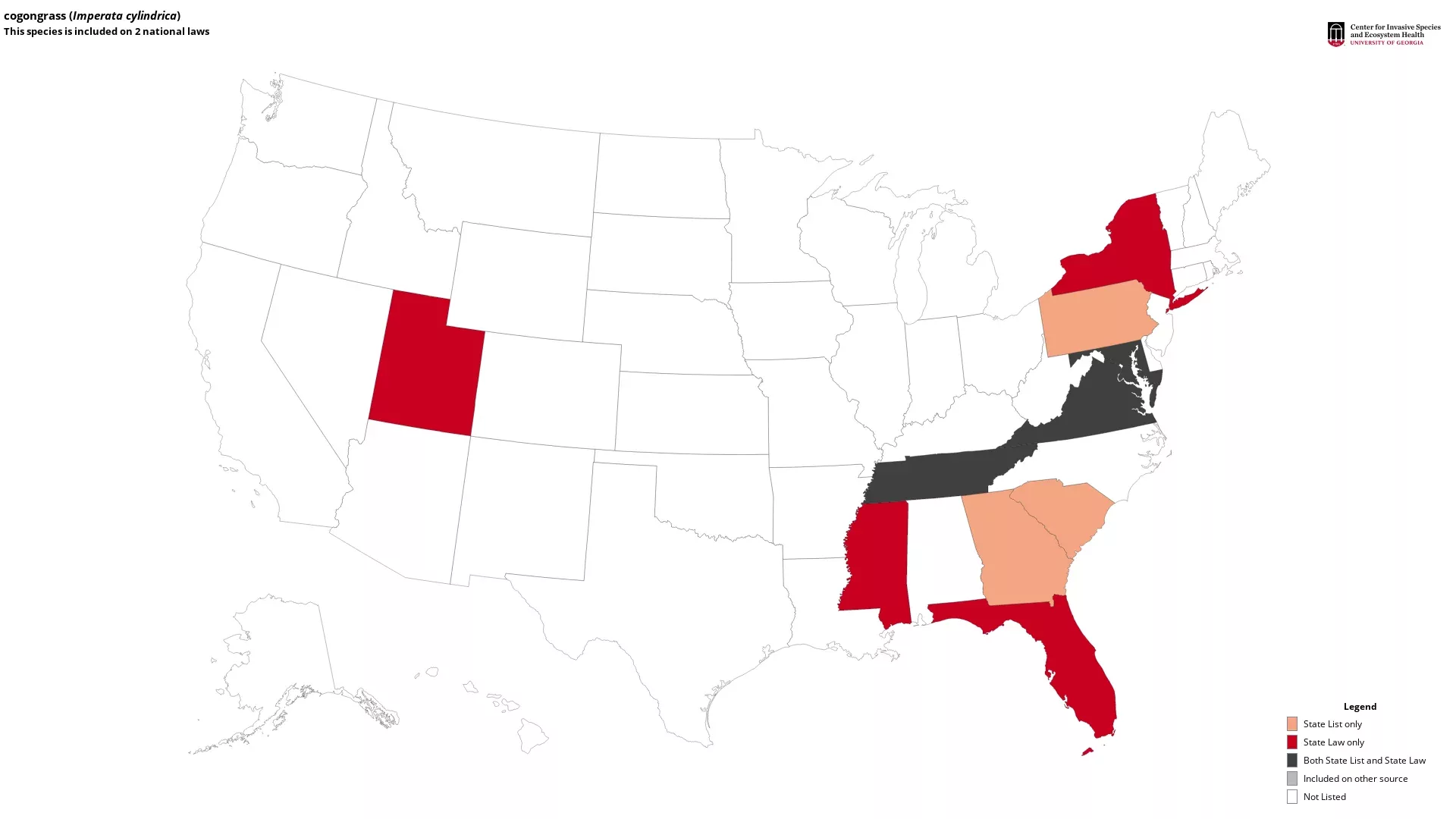

Cogongrass is a hardy species, tolerant of shade, high salinity, moisture and drought. It grows in coastland, disturbed areas, natural forest, planted forests, range/grasslands, riparian zones, scrub/shrub lands, urban areas, and wetlands.
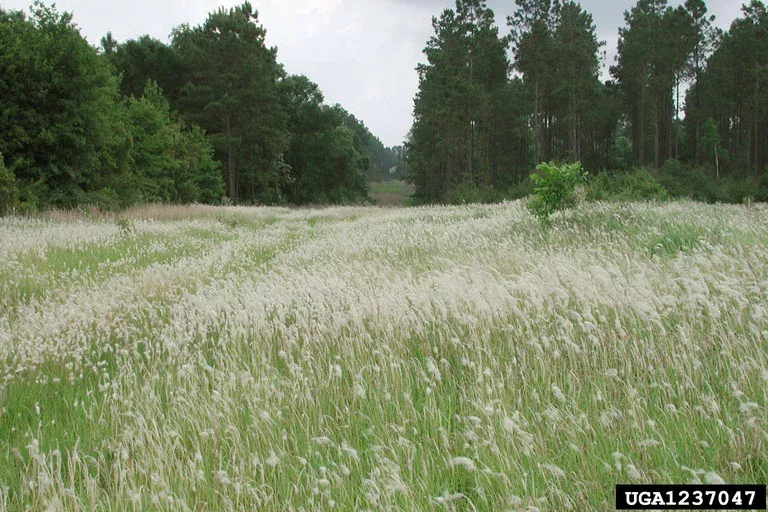

Manual- Multiple cultivations will eradicate congongrass, however mowing and burning stimulates the growth and spread
Chemical- It can be effectively controlled using any of several readily available general use herbicides such as glyphosate in September or October with multiple applications to re-growth. Repeat before flowering in spring to suppress seed production and again in following years for eradication. Revegetation may be necessary following herbicide treatment, to prevent soil erosion and to help reduce reinfestation by cogon grass. It is crucial that applications be made in early fall. Follow label and state requirements for herbicide applications.
